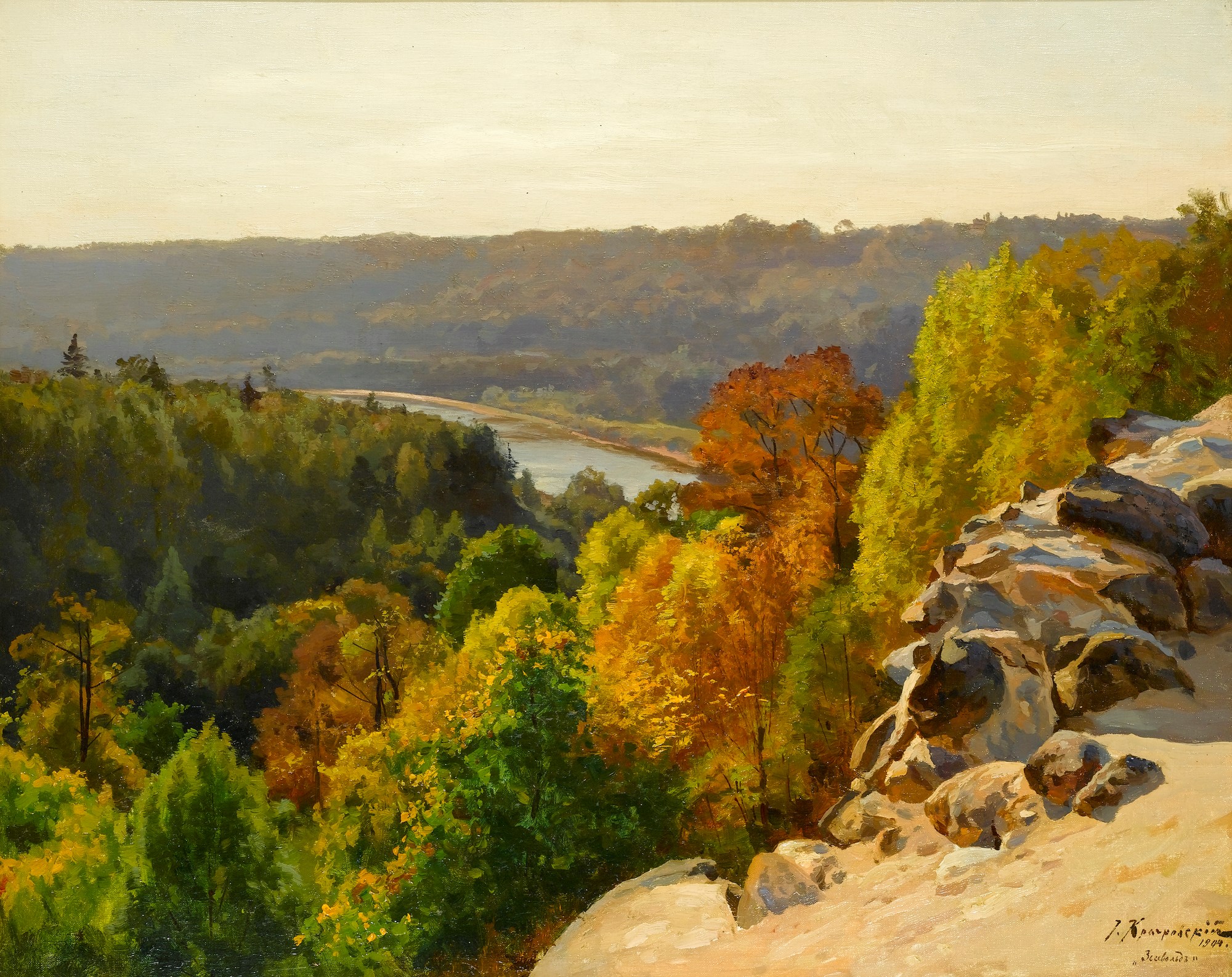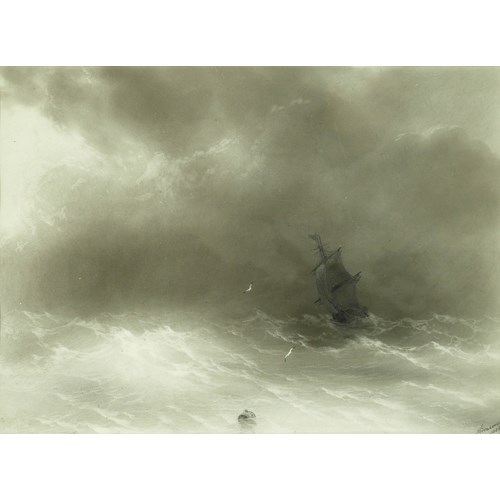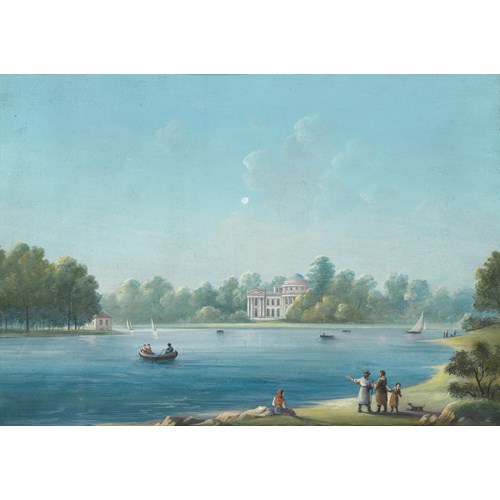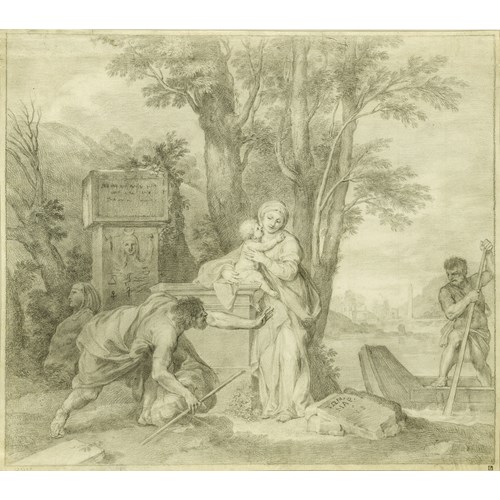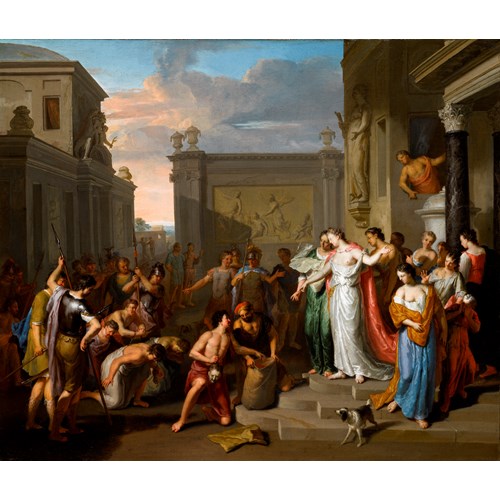Marketplace
Autumn by the River, Sigula, Latvia
Josef Evstafievich Krachkovsky
Autumn by the River, Sigula, Latvia
Date 1904
Period 20th century
Origin Poland, Italy
Medium Oil on canvas
Dimension 59 x 72 cm (23¹/₄ x 28³/₈ inches)
Josef Evstafievich Krachkovsky painted this landscape from the ruins of the thirteenth century Turaida Castle opposite Sigulda, looking down the valley and along the Gauja River, in the Vidzeme region on Latvia. Turaida Castle was built in 1214 under Albert, Archbishop of Riga, on the site of the destroyed wooden castle of the Livonian Order of Knights. Construction and development of the fortifications continued up to the seventeenth century, but by then the castle had begun to lose its strategic importance. It was badly damaged by fire in 1776 and not reconstructed, then over the course of time fell into ruin. So, when Krachkovsky was there it was in a romantic state of disrepair, yet he chose to paint the sweeping beauty of nature and ignore the crumbling edifice.
Autumn by the River, Sigulda, Latvia is striking in its simplicity and tranquillity. Krachkovsky has painted this work from a high view point. A far reaching landscape lies beyond, with rocks, trees and a river in the distance. The river is almost dwarfed by the encompassing forest, but Krachkovsky achieves a successful perspective, despite the difficulties of painting from a height. This is accomplished by creating greater detailing on the trees in the foreground. These trees appear to shimmer in the light, whereas those on the opposite bank of the river become a dark and dense entity. His use of light and vibrant palette gives the scene an intensely vivid feel.
While he was studying at the Imperial Academy of Arts in St. Petersburg, Krachokovsky was taught by Baron Mikhail Klodt von Jurgensburg, who was a founding member of The Association of Travelling Art Exhibitions, or 'The Wanderers', in 1870. The famous critic Vladimir Stasov (1824-1906) wrote that Klodt ‘was attempting simply to seize Russian nature in all its simplicity and discretion, without any pretention or pomposity...’¹ Undoubtedly the ideas of 'The Wanderers' had a profound influence on Krachkovsky while he was studying, and are reflected in the numerous landscape works for which he was known. Another example is Autumn 1904, (Private Collection) where a deep pride in Russia’s beautiful countryside can be seen.
Krachkovsky studied at the Imperial Academy of Arts and he was awarded the rank of Academician ‘for art and excellent knowledge of landscape painting’ in 1885. He was active in France, Italy and Spain between 1880 and 1903 and taught at the Drawing School attached to the Encouragement of Applied Arts Society in St. Petersburg from 1888 to 1890. He was also a member of the St. Petersburg Society of Artists between 1890 and 1903. In 1909 he became a founding member of the Kuindzhi Society of Artists which was an art association created by Arkhip Ivanovih Kuindzhi (1842-1910). The society’s aim was to provide financial support to artists. It also purchased paintings by modern Russian artists to donate them to museums, arranged annual prize competitions for artists, gave grants to artists in need and held literary and artistic soirées and concert parties. Throughout his life, Krachkovsky fought to focus attention and funds on Russian artists and Russian subject matter, rather than follow the Academy’s ideals.
We are grateful to Vladimir Petrov for confirming the attribution of this work.
¹ Shestinkov, A., Zabytye Imena Russkaia Zhivopis' XIX Veka, Moscow, p.125.
Autumn by the River, Sigulda, Latvia is striking in its simplicity and tranquillity. Krachkovsky has painted this work from a high view point. A far reaching landscape lies beyond, with rocks, trees and a river in the distance. The river is almost dwarfed by the encompassing forest, but Krachkovsky achieves a successful perspective, despite the difficulties of painting from a height. This is accomplished by creating greater detailing on the trees in the foreground. These trees appear to shimmer in the light, whereas those on the opposite bank of the river become a dark and dense entity. His use of light and vibrant palette gives the scene an intensely vivid feel.
While he was studying at the Imperial Academy of Arts in St. Petersburg, Krachokovsky was taught by Baron Mikhail Klodt von Jurgensburg, who was a founding member of The Association of Travelling Art Exhibitions, or 'The Wanderers', in 1870. The famous critic Vladimir Stasov (1824-1906) wrote that Klodt ‘was attempting simply to seize Russian nature in all its simplicity and discretion, without any pretention or pomposity...’¹ Undoubtedly the ideas of 'The Wanderers' had a profound influence on Krachkovsky while he was studying, and are reflected in the numerous landscape works for which he was known. Another example is Autumn 1904, (Private Collection) where a deep pride in Russia’s beautiful countryside can be seen.
Krachkovsky studied at the Imperial Academy of Arts and he was awarded the rank of Academician ‘for art and excellent knowledge of landscape painting’ in 1885. He was active in France, Italy and Spain between 1880 and 1903 and taught at the Drawing School attached to the Encouragement of Applied Arts Society in St. Petersburg from 1888 to 1890. He was also a member of the St. Petersburg Society of Artists between 1890 and 1903. In 1909 he became a founding member of the Kuindzhi Society of Artists which was an art association created by Arkhip Ivanovih Kuindzhi (1842-1910). The society’s aim was to provide financial support to artists. It also purchased paintings by modern Russian artists to donate them to museums, arranged annual prize competitions for artists, gave grants to artists in need and held literary and artistic soirées and concert parties. Throughout his life, Krachkovsky fought to focus attention and funds on Russian artists and Russian subject matter, rather than follow the Academy’s ideals.
We are grateful to Vladimir Petrov for confirming the attribution of this work.
¹ Shestinkov, A., Zabytye Imena Russkaia Zhivopis' XIX Veka, Moscow, p.125.
Date: 1904
Period: 20th century
Origin: Poland, Italy
Medium: Oil on canvas
Signature: Signed and inscribed in Cyrillic, and dated '1904' (lower right).
Dimension: 59 x 72 cm (23¹/₄ x 28³/₈ inches)
More artworks from the Gallery


